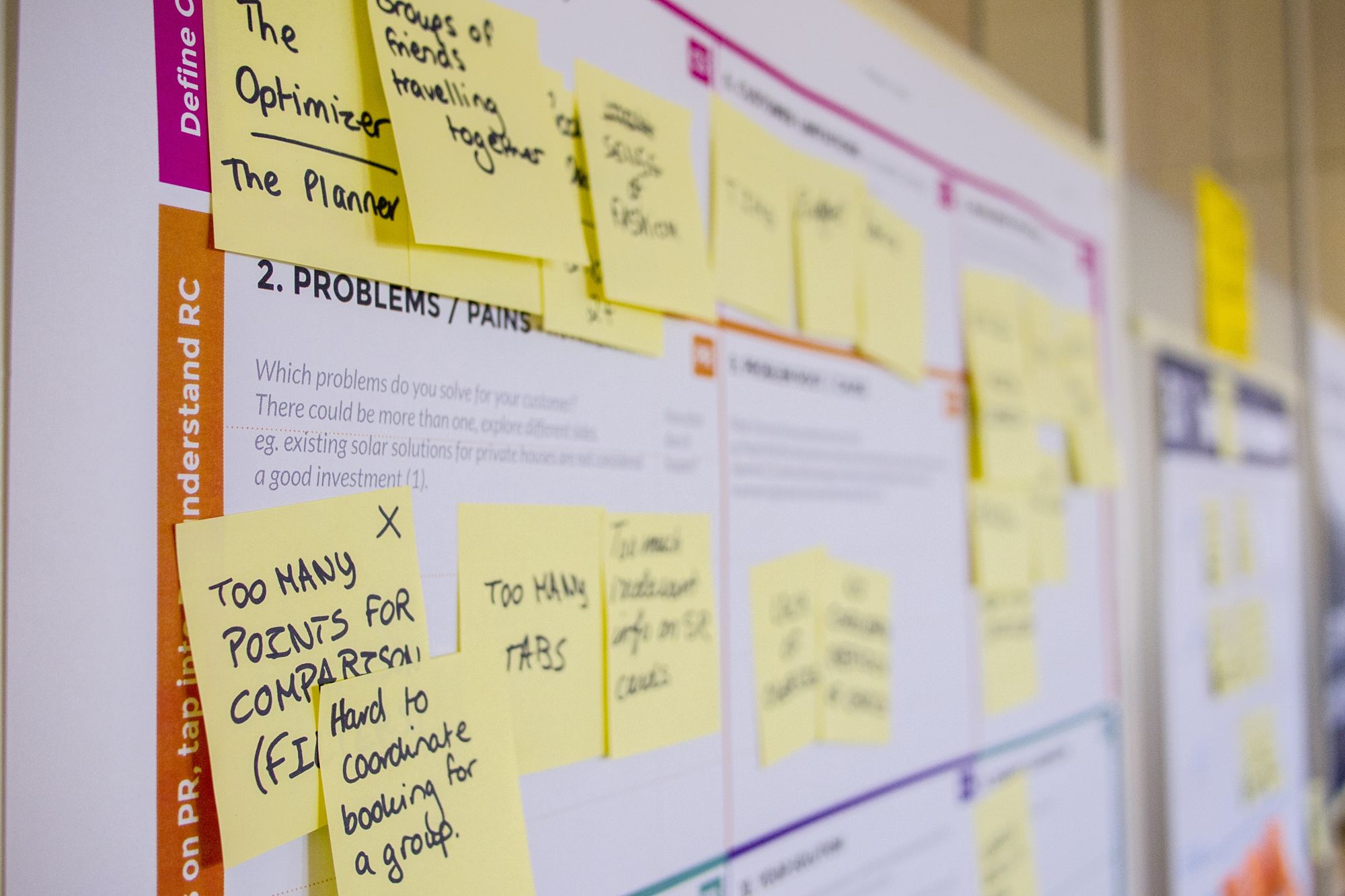In our exploration of Frugal Software Architecture, we have already dived deep into the first two principles - strategic investments and cost optimizations.
As we progress in this enlightening journey, it is time to unveil the third principle: "Embracing a Lean and Agile Approach." This principle serves as a vital cog in the machinery of Frugal Software Architecture. It is an approach that promotes speed, flexibility, and customer-centricity, enabling organizations to adapt to changes and deliver value faster.
However, Lean and Agile are not just about software development. They transcend coding and impact the way we architect our software systems. And when integrated into the fabric of frugality, they can amplify the benefits that Frugal Software Architecture promises.
The Historical Evolution of Lean and Agile Approaches
Lean and Agile approaches have roots in manufacturing and were later adapted to software development, revolutionizing the industry. Lean originated from the Toyota Production System, aiming to eliminate waste and increase efficiency. On the other hand, Agile, officially introduced in the Agile Manifesto of 2001, was a response to the rigid and often inefficient waterfall method, advocating for adaptability, customer collaboration, and iterative development.
Definition of Lean Software Development: Principles and Practices

Lean Software Development is an iterative methodology primarily focusing on delivering value to the customer with fewer resources. It is centred around seven principles: Eliminate Waste, Amplify Learning, Decide as Late as Possible, Deliver as Fast as Possible, Empower the Team, Build Integrity In, and See the Whole.
These principles guide teams to create software that's efficient, cost-effective, and user-oriented. In the context of software architecture, Lean principles help to reduce over-engineering, maintain a focus on value, and foster a culture of continuous improvement.
Definition of Agile Software Development: Principles and Practices
Agile software development is characterized by iterative and incremental development cycles, known as sprints. The primary aim is to produce high-quality software quickly while responding to changing requirements effectively.
In software architecture, Agile principles encourage evolutionary design, regular iterations, early and continuous delivery of valuable software, and active stakeholder involvement. This leads to an adaptable software system that can quickly respond to changing user requirements and business environments.
With an understanding of what Lean and Agile encompass, we can now explore how these approaches intertwine with frugality in software architecture, creating a potent mix that fuels efficiency and innovation.
How the Lean Principle Enhances Frugal Software Architecture
Lean principles are a natural fit in the realm of Frugal Software Architecture. Lean's focus on waste elimination aligns perfectly with frugality's emphasis on resource optimization. Here's how:
- Eliminate Waste: Lean's primary principle aligns with the frugality ethos, ensuring that every aspect of the architecture serves a purpose, without any wastage of resources.
- Amplify Learning: Iterative development cycles in Lean facilitate continuous learning and improvement, helping to create a more efficient, frugal architecture over time.
- Decide as Late as Possible: By delaying decisions, we have a chance to make more informed choices based on more accurate and updated information, leading to a more optimal use of resources.
How the Agile Principle Enhances Frugal Software Architecture
Agile, with its emphasis on adaptability and customer-focus, also lends itself well to frugal software architecture:
- Responding to Change: Agile architectures are designed to be flexible, allowing changes to be made efficiently and without the need for significant resource investment.
- Customer Collaboration: In Agile, customer feedback is integral, ensuring that the architecture continually evolves to meet real needs, reducing the risk of wasted effort.
- Early and Continuous Delivery: Regular delivery of working software allows for incremental value delivery and validation, maximizing the return on investment.
Examples of Lean and Agile working within a Frugal Software Architecture context
Let's consider a hypothetical online retail system. With a Lean approach, unnecessary components and services would be eliminated, focusing on essential features that bring the most value to the customers. It might also adopt a microservices architecture for flexible scaling, using resources only when required and where they are most effective.
On the Agile front, frequent communication with stakeholders would allow the architecture to evolve in line with market changes and user feedback. The use of iterative sprints would enable the system to deliver value quickly, learn from each iteration, and implement changes without requiring significant overhaul, reducing resource consumption and facilitating a frugal approach.
This exploration of the Lean and Agile principles in a frugal software architecture context paints a clear picture of their complementary nature. Up next, we delve into the specific advantages this approach brings.
Advantages of a Lean and Agile Approach in Frugal Software Architecture
Increased Responsiveness to Change
The Lean and Agile approach allows a software architecture to rapidly respond to changes. Whether it's a shift in the market, updated regulations, or evolving customer preferences, Agile practices like iterative development and Lean practices like late decision-making ensure that the architecture remains adaptable, preventing costly and resource-intensive overhauls.
Faster Delivery of Value
Agile emphasizes delivering working software frequently. By focusing on the incremental development of high-value features, the Lean and Agile approach ensures that users receive value quickly, which can lead to faster returns on investment. This approach ties in with the frugal principle of delivering maximum value with minimal resources.
Better Management of Complexity and Uncertainty
Through iterative development, continuous feedback, and incremental changes, the Lean and Agile approach helps manage the inherent complexity and uncertainty in software development. Lean principles help eliminate unnecessary complexity, while Agile enables coping with uncertainty through flexibility. This results in a simpler, more manageable architecture that uses resources more efficiently.
Increased Productivity and Cost-effectiveness
With a focus on value-adding activities and waste elimination, Lean and Agile practices can lead to higher productivity. They help eliminate non-value-adding tasks, optimize workflows, and improve team collaboration, thereby accelerating the development process. This increased productivity combined with resource optimization embodies the essence of Frugal Software Architecture.
Having understood the value a Lean and Agile approach brings to Frugal Software Architecture, we now look at how to practically implement these principles into your software architecture.
Implementing Lean and Agile Approach in Frugal Software Architecture
Understanding the Need for Organizational and Team Mindset Change
- Importance of a Shift in Thinking: Before technical implementation begins, there's a need for stakeholders, architects, and developers to embrace the mindset of frugality, lean, and agility.
- Continuous Learning and Adaptability: Cultivate an environment where the team is open to learning from past iterations and adapting accordingly.
- Emphasizing Collaboration: Encouraging open communication between teams and stakeholders ensures everyone is aligned in pursuing frugal, lean, and agile principles.
Steps to Adopt Lean and Agile Principles in Your Software Architecture
- Begin with a Vision: Define what you aim to achieve with the frugal architecture - is it faster time-to-market, cost savings, efficient resource utilization, or all of these?
- Iterative and Incremental Design: Instead of designing the entire architecture upfront, start small. Design, implement, get feedback, and iterate.
- Eliminate Waste: Identify components or services in the architecture that don't add value and consider their removal or optimization.
- Prioritize Features Based on Value: Use techniques like MoSCoW (Must have, Should have, Could have, and Won't have) to prioritize features.
- Feedback Loops: Implement mechanisms to gather feedback from users and stakeholders frequently. This can include automated testing, continuous integration, and regular stakeholder reviews.
- Flexibility Over Perfection: Instead of striving for a 'perfect' architecture from the start, focus on creating a flexible one that can evolve over time.
Case Studies: Successful Implementation of Lean and Agile in Frugal Software Architectures
Online Streaming Service: Inspired by Netflix
Netflix started as a DVD rental-by-mail service and eventually transitioned to streaming, making its infrastructure undergo tremendous change. As streaming gained popularity, Netflix faced scalability challenges, especially with millions of concurrent users accessing varied content.
- Instead of a monolithic architecture, Netflix adopted a microservices-based architecture. This ensured that if one service went down (e.g., the recommendation engine), the entire platform wouldn’t be affected.
- Netflix developed the Simian Army, a set of tools that intentionally introduced failures in the production environment, to ensure that the system is resilient. This meant they were always prepared and adapted continuously to potential issues.
- New features were regularly rolled out, and feedback was continually integrated.
A reliable streaming service that could handle massive user loads while efficiently utilizing resources and constantly innovating.
Overcoming Challenges in Adopting a Lean and Agile Approach
Common Pitfalls and Misconceptions
- Misunderstanding Agility: Confusing agility with a lack of planning or discipline. While Agile promotes flexibility, it doesn't imply chaos. Proper planning within Agile's frameworks is essential.
- Over-optimization in Lean: While Lean emphasizes eliminating waste, over-optimizing might lead to fragile systems that can't adapt to unforeseen changes.
- Resistance to Change: Due to existing habits and comfort zones, some team members may resist the shift to Lean and Agile practices.
- Neglecting Technical Debt: In the rush to deliver continuously, there might be a temptation to accumulate technical debt. Addressing this debt should be a regular practice.
Ways to Handle Resistance to Change
- Training and Workshops: Conduct sessions to educate teams on the benefits and practices of Lean and Agile methodologies.
- Showcase Success Stories: Highlight successful projects within the organization that utilized Lean and Agile principles.
- Involve Everyone in Decision-making: Ensure all team members feel involved in the process, enhancing their sense of ownership and reducing resistance.
- Iterative Implementation: Instead of a complete overhaul, adopt Lean and Agile practices incrementally, allowing teams to gradually adapt.
Solutions for Integrating Lean and Agile into an Existing Software Architecture that isn't Frugal
- Incremental Refactoring: Don't attempt to change the entire architecture at once. Identify critical areas for improvement and start there.
- Feedback Mechanisms: Integrate tools and practices that allow continuous feedback, even if the existing system wasn't built with Agile in mind.
- Resource Optimization: Identify resource-heavy components and look for Lean solutions to make them more efficient.
- Collaborative Roadmapping: Engage all stakeholders in creating a roadmap for the transformation, ensuring that business needs and technical constraints are considered.
Adopting a Lean and Agile approach in software architecture isn't without challenges, but by identifying potential hurdles and being proactive in addressing them, organizations can smoothly navigate the transition and realize the benefits of a Frugal Software Architecture.
Conclusion
In our journey through the realms of Frugal Software Architecture, the Lean and Agile Approach stands out as pivotal principle. It is not merely a methodology or a set of practices; it is a philosophy that reshapes how we approach software architecture. By merging frugality with the responsiveness of Agile and the efficiency of Lean, we unlock a world where software solutions are dynamic, efficient, and highly attuned to user needs.
Recap of the Role and Significance of the Lean and Agile Approach in Frugal Software Architecture
- Responsiveness and Adaptability: With Agile practices, architectures can seamlessly respond to ever-evolving requirements and market dynamics.
- Efficiency and Value: Lean principles ensure that resources, both in terms of time and technology, are optimally used, eliminating waste and maximizing value.
- Synergy with Frugality: Lean and Agile complement the essence of frugality, crafting software solutions that deliver the highest value with minimalistic resources.
Stay tuned, and let's continue architecting a smarter, leaner, and more agile future together.

